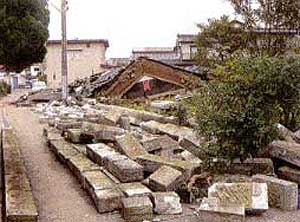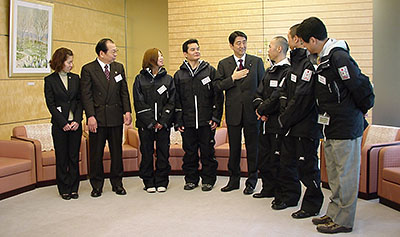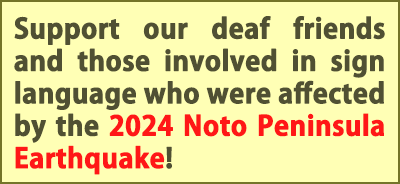from 1 February 2010 Issue of Japanese Deaf News, JFD’s monthly newspaper:
For further awareness of the Deaflympic Games to the deaf children, Japanese Federation of the Deaf- Sports Committee (JFD-SC) organized their first Deaflympic Mini Festival at the Toyama Sunrise gymnasium, Shinjuku, Tokyo, on December 27, 2009. 70 people participated to the event, including 30 deaf junior and senior high school students, medalists and athletes performed at the Summer Deaflympic Games in Taipei, managing staff members of the deaf sports organizations, and students and faculty from Tsukuba University of Technology.
The program started with a lecture, “What is Deaflympic Games?” by Yutaka Osugi, JFD-SC Education and Development Division, and screening of the promotion DVD of the Deaflympic Games, and went on to the trial session of the Deaflympic sports. In table tennis, volleyball, and 20 meter shuttle run, the medalists had guidance and coaching to the individual children, which made the Deaflympic Games familiar to the participants.
The children enjoyed trying the shuttle run, using the equipment to convert the perceived sound into light and images for the cooperation of the Tsukuba University of Technology. They also had a stamp collection at the trial areas and quiz, and the winners received the Taipei Deaflympic goods.
Shoji Yamane, President of the JFD-SC, commented “We will make more effort to raise public awareness of the deaf sports for further development of the Deaf sports”.
 On July 16, 2007, at about 10:13 in the morning, a strong earthquake originating off the Chuetsu coast hit Niigata Prefecture on the opposite side of Japan from Tokyo. Strong quakes over the Japanese scale of 6+ were recorded in Kariu Village in Kashiwazaki City, Niigata Prefecture and in Iizunacho in Nagano Prefecture. Damages were largest around Kashiwazaki City, where many houses throughout the city collapsed. After the earthquake, major lifelines supplying electricity, gas and water were cut off, and fax and emails were not working. No casualties of the Deaf were reported in Nagano Prefecture.
On July 16, 2007, at about 10:13 in the morning, a strong earthquake originating off the Chuetsu coast hit Niigata Prefecture on the opposite side of Japan from Tokyo. Strong quakes over the Japanese scale of 6+ were recorded in Kariu Village in Kashiwazaki City, Niigata Prefecture and in Iizunacho in Nagano Prefecture. Damages were largest around Kashiwazaki City, where many houses throughout the city collapsed. After the earthquake, major lifelines supplying electricity, gas and water were cut off, and fax and emails were not working. No casualties of the Deaf were reported in Nagano Prefecture.


